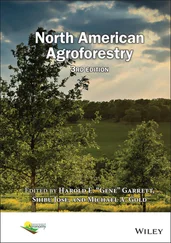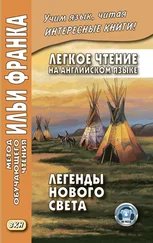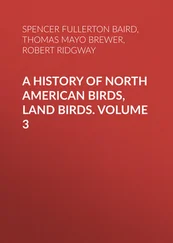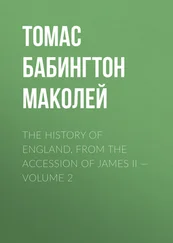Robert Ridgway - A History of North American Birds, Land Birds. Volume 1
Здесь есть возможность читать онлайн «Robert Ridgway - A History of North American Birds, Land Birds. Volume 1» — ознакомительный отрывок электронной книги совершенно бесплатно, а после прочтения отрывка купить полную версию. В некоторых случаях можно слушать аудио, скачать через торрент в формате fb2 и присутствует краткое содержание. Жанр: foreign_antique, Биология, foreign_edu, на английском языке. Описание произведения, (предисловие) а так же отзывы посетителей доступны на портале библиотеки ЛибКат.
- Название:A History of North American Birds, Land Birds. Volume 1
- Автор:
- Жанр:
- Год:неизвестен
- ISBN:нет данных
- Рейтинг книги:3 / 5. Голосов: 1
-
Избранное:Добавить в избранное
- Отзывы:
-
Ваша оценка:
- 60
- 1
- 2
- 3
- 4
- 5
A History of North American Birds, Land Birds. Volume 1: краткое содержание, описание и аннотация
Предлагаем к чтению аннотацию, описание, краткое содержание или предисловие (зависит от того, что написал сам автор книги «A History of North American Birds, Land Birds. Volume 1»). Если вы не нашли необходимую информацию о книге — напишите в комментариях, мы постараемся отыскать её.
A History of North American Birds, Land Birds. Volume 1 — читать онлайн ознакомительный отрывок
Ниже представлен текст книги, разбитый по страницам. Система сохранения места последней прочитанной страницы, позволяет с удобством читать онлайн бесплатно книгу «A History of North American Birds, Land Birds. Volume 1», без необходимости каждый раз заново искать на чём Вы остановились. Поставьте закладку, и сможете в любой момент перейти на страницу, на которой закончили чтение.
Интервал:
Закладка:
Besides the single call-note or the sharp outcry with which the Creepers signalize their movements, and which they utter from time to time as they rapidly and busily move up and down the trunks and limbs, or flit from tree to tree, they have been generally regarded as having no song. But this is not the fact. The careful observations of Mr. William Brewster of Cambridge have satisfied him that these birds have a very distinct and varied song. During the winter these birds are not uncommon in the vicinity of Boston, coming about the houses with all the tameness and confidence of the Parus atricapillus , and permit a very near approach. They are very easily attracted by suspending from a piazza a piece of fat meat. Mr. Brewster has observed them commence singing as early as the 14th of March. Their notes are varied and warbling and somewhat confused; some of them are loud, powerful, and surpassingly sweet, others are more feeble and plaintive; their song usually ends with their accustomed cry, which may be represented by crēē-crēē-crē-ēp . Mr. Brewster, besides repeatedly hearing them sing in Massachusetts in the early spring, has also listened to their song in Maine in the month of June.
Their eggs are small in proportion to the size of the bird, are nearly oval in shape, with a grayish-white ground, sparingly sprinkled with small, fine, red and reddish-brown spots. They measure .55 by .43 of an inch.
Certhia mexicana , “Gloger, Handbuch,” Reichenbach, Handbuch, I, 1853, 265, pl. dlxii, figs. 3841, 3842.—Sclater, P. Z. S. 1856, 290; 1858, 297; 1859, 362, 372.—Salvin, Ibis, 1866, 190 (Volcan de Fuego, Guat.).—Baird, Birds N. Am. 1858, 373 (under C. americana ), pl. lxxxiii, fig. 2; Review, 90.
Sp. Char. Ground-color above very dark sepia-brown, each feather with a sharply defined medial streak of grayish-white, these streaks becoming broader posteriorly, where they are discontinued at the beginning of the rump. Whole rump and upper tail-coverts chestnut-rufous. Beneath pale ashy, becoming almost white on the throat; crissal feathers deep ochraceous except at the tips, which are whitish. Markings of the wings as usual. Measurements (8176, Mexico): wing, 2.50; tail, 2.70; bill (from nostril), .48; hind claw, .30.
Hab. Guatemala and Mexico; probably extending along the table-lands into the United States.
This is one of the best marked of the various races that have been discussed (see p. 124). The ground-color of the upper parts is altogether darker than in any of the others, and the streaks are more sharply defined and narrower; the rufous of the rump is of a castaneous, instead of yellowish cast; the wings appear more uniform with the back, owing to the dark color of the latter, and their pale markings have little of that yellowish tinge so noticeable in the others. In the ashy tinge of the lower parts there is a resemblance to familiaris of Europe; but the latter has not the ochraceous crissum so noticeable in the present bird. There is little resemblance to Western and Rocky Mountain specimens of the C. americana and if these are to be considered as separable from the Eastern (which, however, would not, in our opinion, be advisable) they must not be referred to mexicana .
The Mexican Creeper is introduced here on account of the probability of its occurrence in the Southern Rocky Mountains.
Habits. Mr. Salvin found the Mexican Tree-Creeper by no means uncommon in the pine forests of the upper zone of the Volcan de Fuego. He also observed it frequenting pine-trees in the district of Chilasco, Vera Paz, at about 6,000 feet above the sea.
Family TROGLODYTIDÆ.—The Wrens
Char. Rictal bristles wanting; the loral feathers with bristly points; the frontal feathers generally not reaching to nostrils. Nostrils varied, exposed or not covered by feathers, and generally overhung by a scale-like membrane. Bill usually without notch (except in some Middle American genera). Wings much rounded, about equal to tail, which is graduated. Primaries ten, the first generally about half the second. Basal joint of middle toe usually united to half the basal joint of inner, and the whole of that of the outer, or more. Lateral toes about equal, or the outer a little the longer. Tarsi scutellate.
The impossibility of defining any large group of animals, so as to separate it stringently and abruptly from all others, is well understood among naturalists; and the Troglodytidæ form no exception to the rule. Some bear so close a resemblance to the Mocking Thrushes as to have been combined with them; while others again exhibit a close approximation to other subfamilies. The general affinities of the family, however, appear to be to the Turdidæ , and one of the best characters for separating the two families appears to exist in the structure of the feet.
In the Turdidæ the basal joint of the outer lateral toe is united to the middle toe, sometimes only a part of it; and the inner toe is cleft almost to its very base, so as to be opposable to the hind toe, separate from the others. In the Troglodytidæ , on the contrary, the inner toe is united by half its basal joint to the middle toe, sometimes by the whole of this joint; and the second joint of the outer toe enters wholly or partially into this union, instead of the basal joint only. In addition to this character, the open, exposed nostrils, the usually lengthened bill, the generally equal lateral toes, the short rounded wings, the graduated tail, etc., furnish points of distinction.
Genera.
A.Lateral toes very unequal.
a. Culmen depressed basally, the interval between the nostrils wider than the much compressed anterior half of the bill. Plate on the posterior half of the tarsus continuous. Catherpes.
b. Culmen compressed basally, the interval between the nostrils narrower than the rather depressed anterior half of the bill. Plate on the posterior half of the tarsus broken into smaller scales. Salpinctes.
B.Lateral toes equal.
c. Length about 8 inches. Campylorhynchus.
d. Length less than 6 inches.
Bill abruptly decurved or hooked at the tip. Outstretched feet not reaching near to end of tail. Thryothorus.
Tail longer than the wing, the feathers black, variegated terminally with whitish … Subgenus Thryomanes .
Tail shorter than the wing, the feathers rusty, not variegated with whitish … Subgenus Thryothorus .
Bill only gently curved at the tip. Outstretched feet reaching nearly to or beyond the end of the tail.
Back without streaks. No distinct superciliary stripe. Troglodytes.
Bill curved, sub-conical. Tail as long as wing … Subgenus Troglodytes .
Bill straight, subulate. Tail much shorter than wing … Subgenus Anorthura .
Back streaked with black and white. Cistothorus.
Bill short, stout; its depth equal to one half its length from the nostril; gonys straight or even convex, ascending. Crown streaked; no distinct superciliary stripe … Subgenus Cistothorus .
Bill elongated, slender; its depth less than one third its length from the nostril; gonys slightly concave, declining. Crown not streaked; a conspicuous superciliary stripe … Subgenus Telmatodytes .
Campylorhynchus , Spix, Av. Bras. I, 1824, 77. (Type, C. scolopaceus , Spix = Turdus variegatus , Gmel.)
Читать дальшеИнтервал:
Закладка:
Похожие книги на «A History of North American Birds, Land Birds. Volume 1»
Представляем Вашему вниманию похожие книги на «A History of North American Birds, Land Birds. Volume 1» списком для выбора. Мы отобрали схожую по названию и смыслу литературу в надежде предоставить читателям больше вариантов отыскать новые, интересные, ещё непрочитанные произведения.
Обсуждение, отзывы о книге «A History of North American Birds, Land Birds. Volume 1» и просто собственные мнения читателей. Оставьте ваши комментарии, напишите, что Вы думаете о произведении, его смысле или главных героях. Укажите что конкретно понравилось, а что нет, и почему Вы так считаете.












